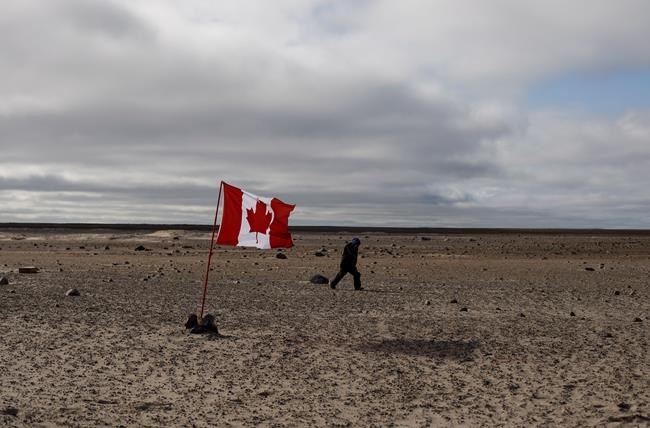
Guardian Raymond Niaqunnuaq walks on the barren terrain at Davit camp on Saunitalik Island near Gjoa Haven, Nunavut, on Friday September 1, 2017. Raymond Niaqunnuaq is a Guardian that protects the area as crews work to recover artifacts left on the sunken Franklin ship the Erebus. THE CANADIAN PRESS/Jason Franson
September 17, 2017 - 7:00 AM
GJOA HAVEN, Nunavut - The man who guided searchers to the wreck of John Franklin's flagship may have one more surprise left up his parka sleeve.
"I believe that Franklin is in a vault on King William Island," says Louie Kamookak, an Inuit historian who has spent 30 years correlating stories collected from elders with European logbooks and journals.
The mystery that surrounds the Franklin Expedition is one of the great legends of Arctic exploration. The ships Erebus and Terror set out from England in 1845 with 129 men to search for the Northwest Passage, but they never returned.
Little by little, the Franklin story is coming together.
Artifacts and graves found throughout the 19th and 20th centuries were joined by several more bodies discovered in the 1980s. The ships were found in 2014 and 2016.
But where is the grave of John Franklin?
Kamookak relates two stories passed down through generations that may offer tantalizing clues.
"One group of Inuit said they saw a burial of a great chief under the ground, under stone."
This was remarkable for the hunters, as Inuit traditionally buried their dead on the surface, wrapped in caribou skins and under a cairn. They investigated the site, expecting to find something similar. All they found was a flat stone.
"They said he was a great shaman who turned to stone," says Kamookak.
In another account, a group of travelling Inuit came across a large wooden structure.
"They managed to get a cross piece they took for a sled. The man who was telling the story said there was a flat stone and he could tell the stone was hollow."
Given that other expedition graves have been found on land, Kamookak believes Franklin's is there too.
"I don't think they would have an ocean burial for him."
If he's right, Franklin is probably still lying beneath the tundra on King William Island's rocky and windswept northeast coast.
If he's wrong, chalk up one more mystery in a tale that's been generating questions for 170 years.
News from © The Canadian Press, 2017